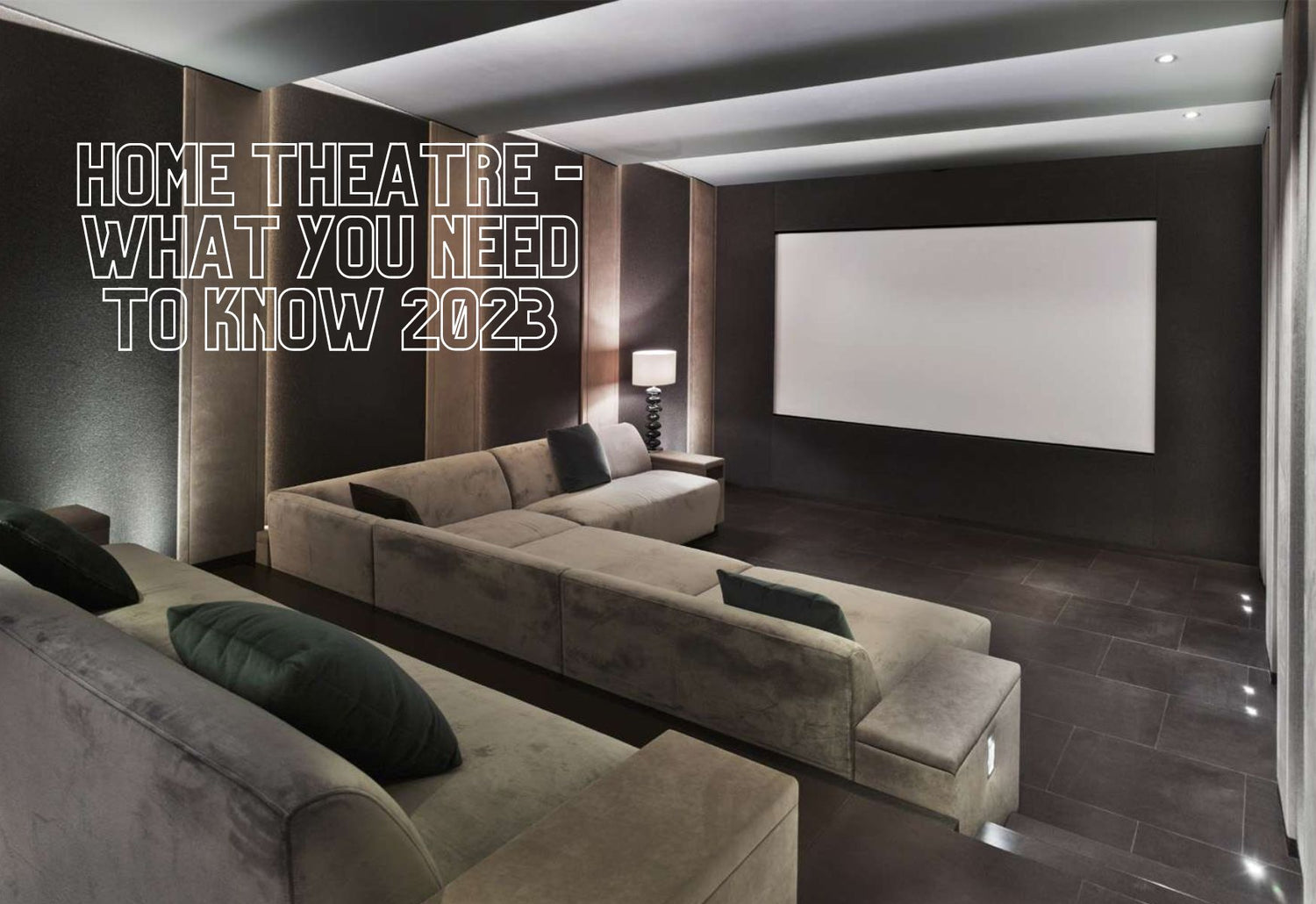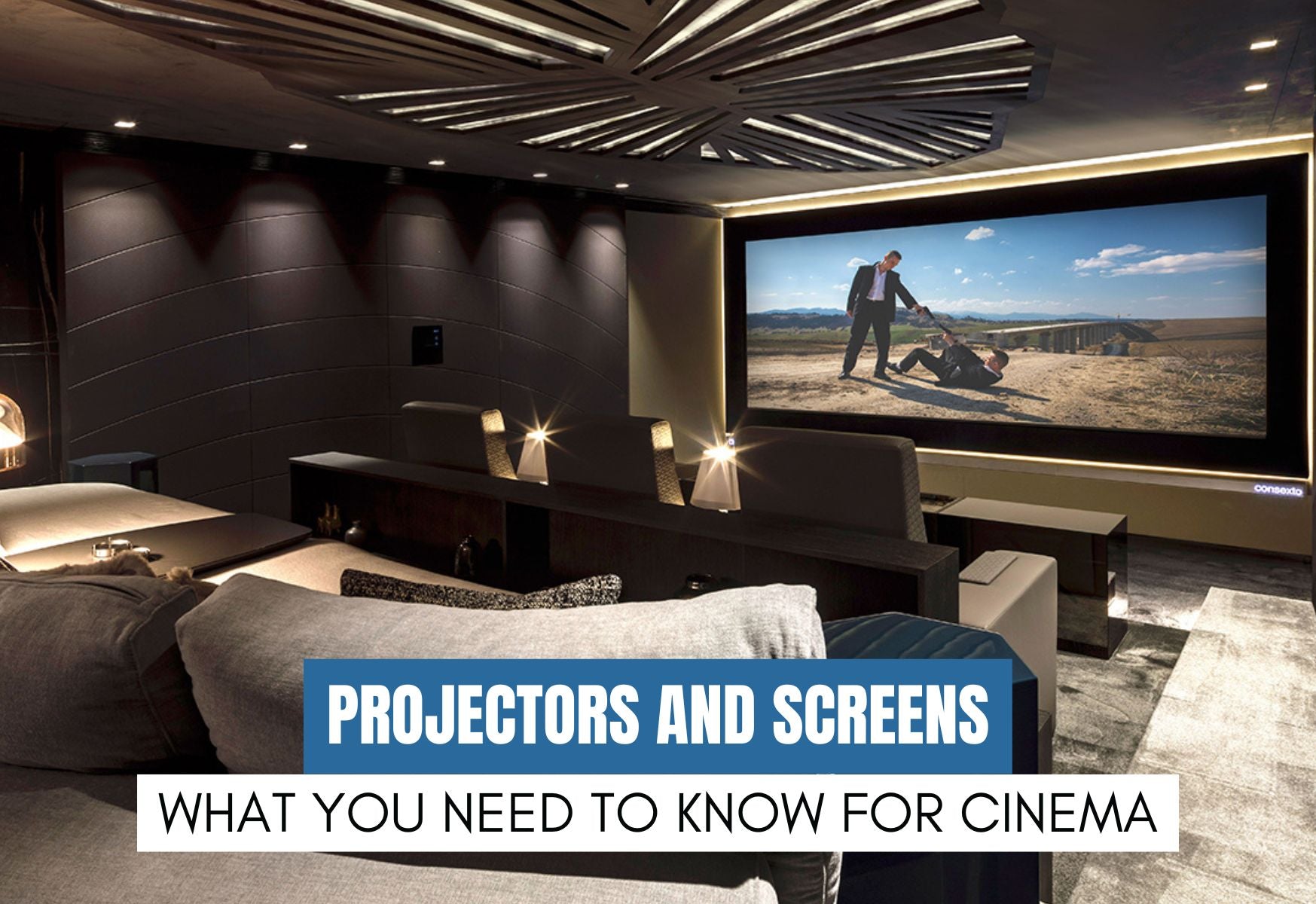Is A Home Theatre Worth It
- The demand for home theatre has never been stronger. Off the back of cinemas being more than just movies, but a Netflix hub, a gaming centre and a sporting arena, more people are getting into home theatre.
- With this rise in demand, there's unfortunately more poor quality theatres that might look good but don't deliver.
- Consider your options carefully and assess what value you're actually getting in a home theatre package. There are many ways to fool you that you might not be aware of.
This is the first part of a few posts/videos that we'll be creating around home cinema, where we'll try to cut away all the noise and boil it down to what you need to know to make a fully informed decision regarding your next theatre, whether it's from us in Sydney or someone else. It's more important to us that you get what you pay for!
The Resurgence of Home Theatre...
The year is 2001. Surround sound has started to make a splash on the scene as the new way to experience movies at home. We remember putting on countless demos of the opening scene of "Swordfish" featuring Hugh Jackman and Halle Berry - no, not the reading-a-book-while-sunbaking scene you're thinking of - the opening action sequence where the bomb explodes, flinging ball bearings around the hostage scene, wreaking havoc on the surroundings. It was such a great scene to come just when Dolby Surround Sound was here, and you could hear the ball bearings whizzing all around you.
Ten to twelve years later, the home theatre market was actually in decline, believe it or not. Manufacturers of AV Receivers were up in arms, predicting the death of the home theatre market. Home Theatre In a Box (HTIB) systems were quickly falling out of favour, as people started to realise they are actually quite bad in terms of what they are supposed to deliver.
It wasn't until Dolby Atmos emerged on the scene, promising the third dimension of spatial audio - the height channels. There were a couple more competing formats that came out, Auro3D and DTS:X, but by far and away, the winner is Dolby Atmos. Adding the height channels meant that cinemas could recreate flyover effects, bullets whizzing over your head, and most importantly, it was possible to truly create a sphere of audio.
These days, Home Theatre has really become ubiquitous with entertainment. It's possible to create home theatres that integrate in with your living room as well as dedicated space. They're not only used for movies, but streaming services like Netflix and Stan, a gaming hub for your PS5 or Xbox One, and also a sports viewing arena.
...at a cost!
Just like anything that becomes popular, there are those that seek to make financial gain from it at the cost of performance, seeking to push what they want to sell and make the most money on, rather than offering the best theatre for the budget. This happens at all price points - we've seen offerings from $20,000 all the way to $500,000 where the customer has paid for things they don't need, or they've bought into the snazzy presentation but really ended up with something lacklustre.
Enough is enough! Not to sound high-horsey, but we believe that arming you with the right information to make an informed decision is the right thing by you and by the manufacturers who sink countless man hours and dollars into designing products that are supposed to bring us joy.
Further posts will discuss how to choose products to go in your home theatre, but to start, let's cross of a few of the most common things we see that should ring some alarm bells.
Things To Look Out For - Structure and Acoustic Treatment
Let's talk structure. The fact is, a good home theatre, particularly if you're wanting to achieve THX levels of performance (which if you aren't, why are you doing a home theatre), you're going to be pushing 85dB with 20 dB of headroom. In real life terms, that's sound levels between a hairdryer next to your ear, to being in a live concert. Sound moves air, and moving air causes vibrations, and at that level of vibration, things are going to move.
If your structure isn't strong, with adequate damping between studs and plasterboard, you're going to hear that vibration from the walls when you play your home theatre. And it is SUPER ANNOYING! The last thing you want to hear is constant buzzing from somewhere when you're watching something.
So that means walls should be fixed, solid and preferably acoustically internally treated. Temporary structures erected to house your home theatre means that you're just throwing away money on a crappy, flimsy solution, and it just isn't worth it. The money you spend on the temporary "home theatre tent" is money you could be saving, or putting into better quality equipment.
Acoustic treatment is another area. For a home theatre to perform its best, you need acoustic treatment - there's no other way around this fact. There will be excess muddy base created by the corners of the room, as well as reflection from walls and ceilings which will impact the quality of the performance. But be wary of this - it's possible to over treat a room, and even worse, spend money on excessively expensive treatment that will never be required. We've been in a theatre deployed in Sydney where the overall cost of the theatre was $500,000, but the value of the actual products like speakers, projectors, amplifiers and processes only contributed $150,000 of that cost, rather than most of the money going towards the products that actually matter.
It's obvious that the installer who designed the job made most of his money on the room treatment, and unfortunately convinced the customer that this was the way to go. The thing that breaks our hearts is that the client with the $500,000 theatre is going to show it off to his friends that have a $100,000 cinema, and when it doesn't perform as well, he's going to be really disheartened. Not only that, the friend who has the $100,000 theatre will never want to look at anything better, as a $500,000 theatre doesn't perform (reference our article "Your Journey into High End Audio and What to Expect" to get an idea why we find price to be a really poor indicator of quality).
Acoustics is an area that is actually quite straightforward, but so often it's poorly designed and deployed, and because its an area that is misunderstood, customers often don't know what they're paying for. We'll be publishing a guide on home theatre acoustics shortly, so you can reference that as a guide.
Things To Look Out For - Number of Channels
A quick glance into home theatre systems and you'll see a bunch of references to 5.2.2, 9.1.6, 23.4.8 and so on. What do these numbers mean?
In a Dolby Atmos context, these numbers are a reference to the number of channels that are going into a system. So for a system that is A.B.C:
- A - the number of channels of speakers along the walls. This will consist of front and surround channels.
- B - the number of channels of subwoofers going into the room.
- C - the number of height channels for Dolby Atmos that will go into the ceiling.
Quick note here: number of channels does not equal number of speakers. If you have 4 subwoofers in a room, but they are all playing the same channel (i.e. stream of information), then it is still a "X.1.Y" system. For a system to be a "X.4.Y" system, the processor used must be able to send out 4 discreet channels of information.

There was a time when the maximum number of channels that were designed was 9.1.6, so that's 9 front and surround channels, 1 channel of subwoofer and 6 Atmos channels.
In recent times, we've seen some huge numbers, like 23.2.6, i.e. 23 discreet front and surround channels. Why?
It's important to understand that the number of channels needed for a given room is largely dictated by the width and the depth of the room. The larger the room, the more channels that may be required to create a true surround effect. Speakers in a home theatre setup need a minimum space, normally around 1-1.5 metres, between the next speaker to accurate resolve the information it's supposed to. Put the speakers too close together, and you simply won't hear spatial audio the way it was mixed onto the movie or music track.
So for a large room, and by large room, we're talking commercial cinemas, it makes sense that systems are pushing lots of channels. But unless you live in a commercial cinema, even a larger home theatre room, say 10 metres by 10 metres, putting that many channels in the room actually degrades your performance, as no speakers will be able to accurately deliver the surround experience it's supposed to.
But what it does mean is that the installer is able to bedazzle you with the "more is better" concept, and sell you more speakers for more profit.
Theatre is complicated, but is rooted in principles
There's a reason why there's an established Dolby Atmos guidelines. Movies that are mixed in Dolby Atmos are done so according to their guidelines. Manufacturers make product according to Dolby Atmos guidelines. Your theatre should be installed according to Dolby Atmos guidelines. That way, you get what you're paying for. The opportunists are always looking for points of difference to maximise their returns, but the fact is, the guidelines are the guidelines. You can certainly get better quality product that adheres to those guidelines, but any sort of deviation from guidelines means that the final product is just different for differences sake, and often produce an inferior product for the budget.




